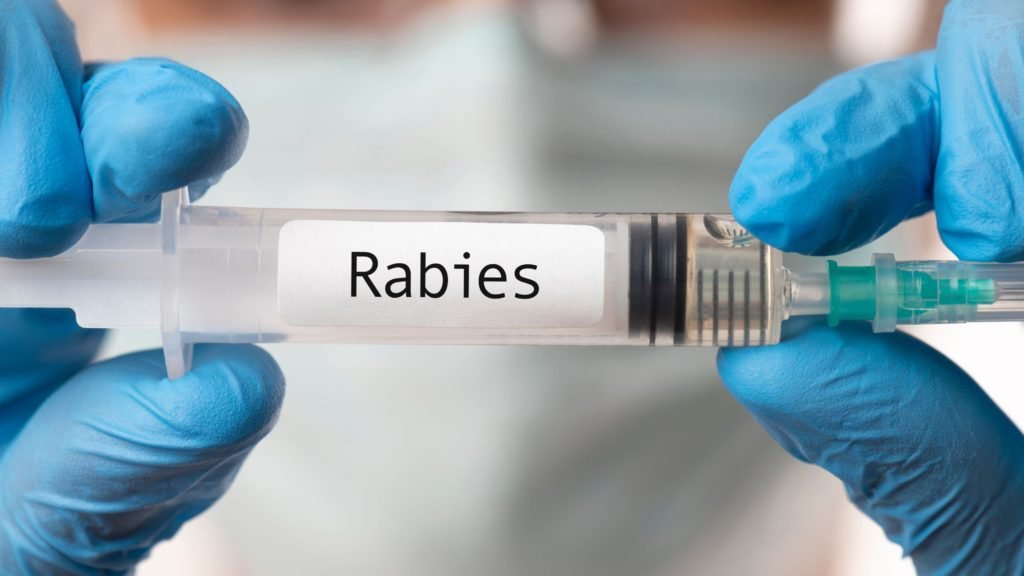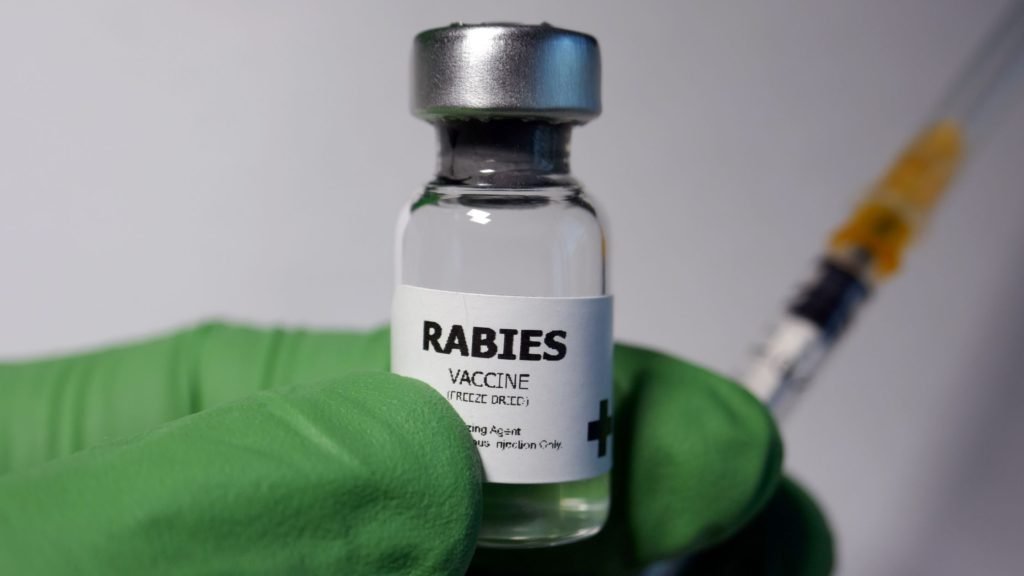Rabies in dogs is a lethal illness that affects virtually all warm-blooded animals, excluding rodents. Vaccination efforts for dogs and other household animals in the United States have proven surprisingly effective. That has significantly decreased the danger of rabies in dogs and their owners.
How do dogs get rabies?
The rabies virus is the principal cause of rabies in dogs. The virus spreads when an infected animal bites or scratches and spits saliva. Through the wound, the virus enters the body and begins to replicate in the tissues. It subsequently spreads to the nerve cells and ascends to the brain, causing inflammation and damage.
Dogs can become infected with rabies by contact with common virus carriers, including raccoons, skunks, foxes, and bats. They can also become infected by coming into touch with other domestic animals that have rabies.
In regions where rabies is prevalent, dogs could get the virus through contact with infected cattle, sheep, or goats.
Dogs who travel overseas or reside in places where the disease is prevalent are at a greater risk of contracting the virus.
While the rabies virus is the primary cause in dogs, infected animals’ saliva can spread this sickness to vulnerable dogs.
Rabies symptoms in dogs
Fever: is one of the initial signs of rabies in dogs. Indicative of an illness, the dog’s body temperature may increase over its typical range.
Weakness: this is an additional early indication of rabies in dogs. That shows a lack of energy, weariness, or muscular tone loss.
Change in behavior: Similarly, rabies can result in behavioral changes in dogs. That may involve personality changes, such as becoming more aggressive or submissive than usual.
Appetite loss: occurs when a dog loses interest in food and water and stops eating or drinking.
Disorientation: Dogs may get disoriented or confused and have difficulty helming familiar environments.
Paralysis: Rabies can lead to paralysis as the disease advances in dogs. That can damage the facial muscles, resulting in a sagging lower jaw or the inability to seal the mouth. Additionally, it might impair the limb muscles, making it difficult for the dog to move.
Seizures: Rabies can also induce seizures, which present as muscular twitching, convulsions, or loss of consciousness in dogs.
Aggressive Behavior: Rabies might lead dogs to exhibit more aggressive behavior than usual. Behaves like biting, snapping, or attacking other animals or humans.
drooling: Due to paralysis of the facial muscles, dogs may have excessive salivation, foaming at the mouth, or drooling.
You May Also Interest: Distemper in Dogs: Understanding the Symptoms and Prevention
Rabies in dogs prevention and Vaccine

It is vital to avoid rabies in dogs to safeguard not just the health of your furry companion but also that of your family and community. Vaccination is the most effective strategy to prevent rabies in dogs. Vaccines against rabies are safe and very efficient at protecting dogs from the virus. The DHPP (Distemper, Hepatitis, Parainfluenza, and Parvovirus) combination vaccination is given to pups starting at 6 to 8 weeks of age, with boosters every 3 to 4 weeks until 16 to 18 weeks. Annual boosters follow. The best vaccination strategy for your dog depends on its health, location, and lifestyle.
In addition to immunization, pet owners should be informed of the risk of rabies, avoid contact with wild animals, especially those known to carry the virus, and keep their dogs indoors or on a leash to prevent exposure. Monitoring your dog’s behavior and reporting unusual symptoms to a veterinarian will improve survival rates.
You May Also Interest: A Comprehensive Guide to Understanding and Treating Lyme Disease in Dogs
FAQ about rabies in dogs
Can dogs with rabies spread the disease to other animals in the household?
Yes, dogs with rabies can spread the disease to other animals in the household, especially if they share food or water bowls or have close contact with other animals.
Can dogs with rabies transmit the disease to humans?
Yes, dogs with rabies can transmit the disease to humans through bites, scratches, or contact with saliva from an infected animal.
Can rabies be treated in dogs once symptoms appear?
No, once symptoms of rabies appear in dogs, there is no effective treatment, and the disease is almost always fatal.
Is there a difference in the symptoms of rabies in different breeds of dogs?
While the symptoms of rabies are similar in all breeds of dogs, some dog breeds may have a higher risk of exposure to the virus due to their size, behavior, or lifestyle.
Can a dog get rabies from eating a dead animal?
Yes, a dog can get rabies from eating a dead animal with the virus. The virus can still be present in the animal’s saliva and can infect a dog if it comes into contact with it.
Can a dog get rabies from being bitten by another animal?
Yes, a dog can get rabies if another animal with the virus bites it. The virus can be transmitted through the infected animal’s saliva and enter the dog’s body through the bite wound.
Can a vaccinated dog for rabies still get the disease?
While the rabies vaccine is highly effective in preventing the disease, it is not 100% effective. A vaccinated dog can still get rabies, but the chances of this happening are meager.
How long does it take for symptoms of rabies to appear in dogs after exposure to the virus?
The incubation period for rabies in dogs can vary, but it typically ranges from 2 to 8 weeks. In some cases, it can take several months for symptoms to appear.
Can a dog that has recovered from rabies infect other animals or humans?
No, a dog recovered from rabies cannot infect other animals or humans. The virus is only present in the saliva of an infected animal during the acute phase of the disease.

